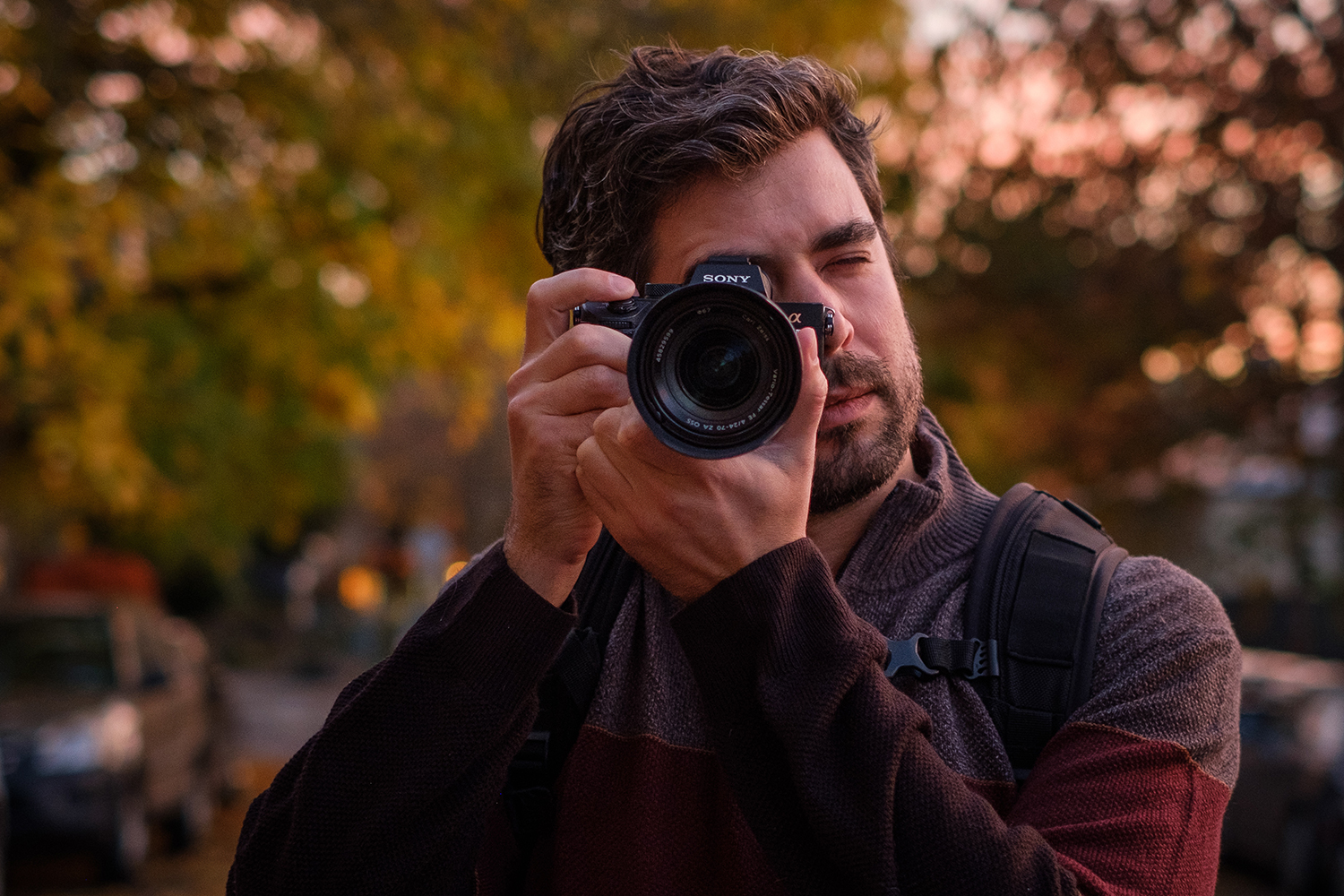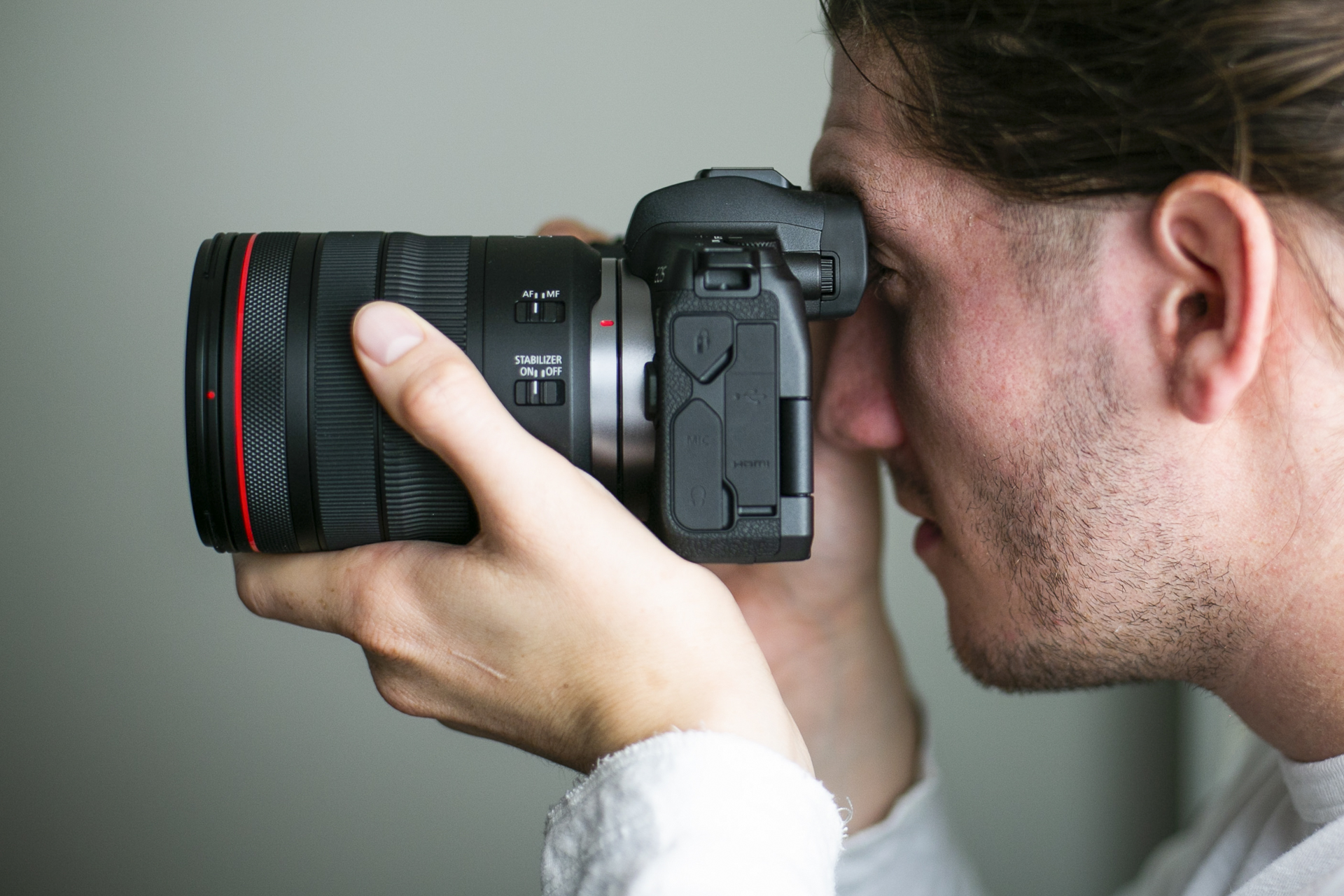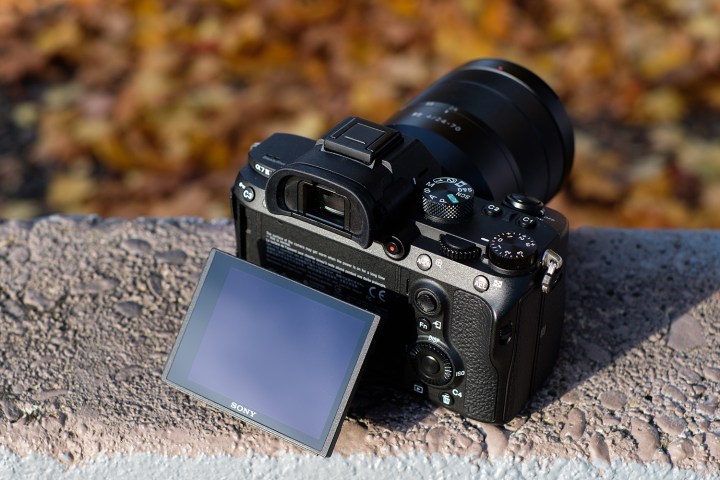Canon has been the best selling interchangeable lens camera brand for more than a decade, but Sony is catching up — and just became the number-one brand of full-frame cameras in 2019. Thanks to other formats, Canon maintains the edge overall, but the race is neck and neck.
The question of which company makes the better camera is no different than the Apple vs. Android debate — the answer depends on exactly who’s asking. If you’re a photographer who demands an optical viewfinder, a DSLR is the way to go — and that’s Canon’s bread and butter. But if you’re looking for the best performance in a mirrorless camera, that’s where Sony shines. Canon entered the full-frame mirrorless category in 2018 with the EOS R, but it’s still catching up to Sony in this department.
In the end, it’s the little details — and what and how you shoot — that will end the tug-of-war between these two brands. Here’s what to consider in the Canon vs. Sony debate before buying a new camera, or even jumping ship and swapping brands. You may also want to read our articles on Sony vs. Nikon and Canon vs. Nikon.
History and company profile
Canon originally launched in 1933 (as Kwanon). The company originally focused on optics, but quickly becoming known for developing cameras, as well. Throughout the company’s history, Canon has been first in a number of different technological feats, from adding video to still cameras to synchronizing the flash. The EOS name that’s found in both Canon’s current DSLR and mirrorless cameras goes all the way back to 1987, when Canon developed an electric connection between the camera and lens, allowing the two to share data.
Today, Canon develops both consumer and professional cameras from point-and-shoots to DSLRs and mirrorless cameras. The company also has a line of both consumer and cinema-grade video cameras as well as printers and technology in the office, healthcare, and industrial sectors.
Sony launched 13 years after Canon — but the company’s cameras came much later, in the 1980s. Unlike Canon (and Nikon, for that matter), Sony didn’t start with film. It’s first camera was the analog, but electronic, Mavica. The company then waited several years before launching the CyberShot series — still a designation for Sony compact cameras — in 1996. A shorter camera history may not necessarily be a bad thing, however. The company has been quickly catching up, probably in part to the fact that it didn’t have existing products to worry about cannibalizing, which freed it to innovate in the mirrorless arena. Sony has been first to market with a handful of different features over the past few years and new launches are often impressive.
Sony’s electronics arguably cross more categories than other camera companies, with the Sony name stamped on everything from video game systems to TVs, headphones, smartphones, and robots. And yes, Sony has a line-up of camcorders and professional cinema cameras, too.
Current camera series
Canon currently has more than a dozen different DSLRs stratified from beginner to professional models. Canon’s DSLRs start with the more affordable Rebel series with the likes of the EOS Rebel T7i and Rebel SL3. Above the Rebels, you’ll find cameras like the EOS 77D and EOS 90D, which still use the same APS-C sensors but offer more control and customization than the Rebel line. Single-digit models, like the Canon EOS-1D X Mark II and 5D Mark IV, use larger full-frame sensors and target a higher-end customer.
Canon’s mirrorless camera line is divided into two series, EOS M, which uses APS-C sensors, for beginners and the full-frame EOS R for enthusiasts and pros. Its most recent mirrorless camera is the EOS RP, an entry-level full-frame model that is the cheapest new full-frame camera ever made. The two systems use different lens mounts that are not compatible with each other, making it difficult to upgrade from EOS M to EOS R.
For photographers that want an even smaller camera, Canon’s PowerShot line of point-and-shoots offers a variety of chocies. The G series, like the PowerShot G1 X Mark III, use larger sensors for better image quality, while cheaper models like the SX and ELPH models are more consumer-oriented.
Sony doesn’t have DSLRs — it has SLTs, which are similar but use a translucent mirror and electronic viewfinder. Sony doesn’t spend as much time developing SLTs anymore, but they still include some competitive features like fast performance. Currently, Sony lists three models: the A99 II, A77 II, and the A68.
Sony’s mirrorless line is where the company is really focused. The A7 and A9 series use full-frame sensors, with the A7 being the basic model, the A7R the high-resolution option, and the A7S targeting video users. The A9 — and now the A9 Mark II — is an action-focused camera with professional sports photographers in mind. Sony’s APS-C mirrorless cameras offer similar performance on a budget, like the A6400. Unlike Canon’s EOS M and R cameras, Sony’s crop-sensor and full-frame models are built around the same Sony E mount, so you can use the same lenses.
Sony is perhaps just as well known for the RX100 and RX10 series of compact cameras, which house a one-inch sensor that’s larger than what’s in most compacts. The RX100 series is more compact, while the RX10 is a bridge-style camera with much more zoom. Sony also makes lower-end point-and-shoots, but the RX cameras are the ones you should consider.
Image quality
While there are differences in how different cameras process images, viewers won’t be able to tell if you shot a Sony or a Canon (nor should they care). A good photo is a good photo.
That doesn’t mean there aren’t differences between the image quality from the two brands. Color science — how a camera processes red, green, and blue light — varies between brands. While color quality is subjective, many say that Canon has the more realistic colors of the two, with better rendering for skin tones. (This is something Sony worked to improve in the new A6100 and A6600.) But color science really only comes into play for in-camera JPEGs. When shooting RAW, the manufacturer’s color science doesn’t mean anything. Here, it comes down to the color science of your editing software, like Adobe Lightroom or Skylum Luminar. Still, for in-camera JPEGs, you may find one brand gives you better results — but this is highly subjective.
There are objective differences that detailed image quality analysis can reveal. For example, DxOMark tests reveal that Sony’s sensors capture more dynamic range than Canon’s. But the numbers don’t always tell the full story, and any real world difference may not be noticeable. You’ve undoubtedly seen incredible images taken with both Sony and Canon cameras; as always, the photographer matters more than the gear.
Performance
What camera brand offers better autofocus? We’ll go ahead and annoy you (again) with this answer — it depends.
Canon uses a technology called Dual Pixel Autofocus, or DPAF, on its mirrorless cameras and its DSLRs when used in live view mode. This is a type of phase-detection autofocus, and it’s very fast and accurate. One advantage of Canon’s system is the sheer number of focus points that are possible, with the EOS R having over 5,000.
Sony also uses phase-detection in its mirrorless cameras, and while its cameras may not have as many focus points, Sony has had many more years to refine its mirrorless focusing systems. Its latest cameras stand out thanks to a system called Real-Time Tracking and Real-Time Eye AF which provide excellent subject recognition and tracking capabilities. It’s the most reliable autofocus we’ve seen on a mirrorless camera.
Speed-wise, Sony has a bigger edge. Not only does it dominate the top of the range with the 20-frames-per-second A9 II, but its lower and midrange cameras also boast impressive continuous shooting specs. Even the entry-level full-frame A7 III hits 10 fps. While the sports-oriented Canon EOS 1D X Mark II can shoot at 14 fps, Canon’s mirrorless cameras are much slower. The EOS R tops out at just 5 fps burst with continuous autofocus.
Design
Button placement, menu interfaces, and ergonomics are more important to finding the right camera than you may realize. In general, we tend to prefer the feel of Canon’s cameras, although this is largely subjective. Sony’s menu systems are often more complicated, but part of this is to do with the additional options in them, especially for video settings.
When it comes down to which brand offers the better design, it all comes down to the way it feels in your hands.
Lenses
Because Sony has a shorter history of interchangeable lens cameras, the brand has fewer lenses to choose from — but it still has quite a few. Sony now offers all the major lenses most photographers are looking for — it’s just the specialty lenses, like tilt-shifts, that may be missing.
Canon may not yet have many native lenses for its mirrorless systems, but its DSLR lenses are easily adapted to both M and R cameras without sacrificing performance or quality. That opens a decades-long history of optics for these new systems.
But that’s not the whole story. Canon DSLR lenses can also be adapted to Sony mirrorless cameras, and while some performance sacrifices might be made due to the reliance on third-party adapters, it’s still a useful way for Sony shooters to gain access to more lenses.
Price
As major competitors, Sony and Canon are often close in price on competing camera bodies, though with some variation. The list price of the EOS R, for example, is $300 higher than the A7 III. With smaller mirrorless cameras, that variation can flip — the Canon EOS M50 is $200 cheaper than the Sony A6400 (although, it’s arguably not as good as a camera, either).
For lenses, Sony tends to be the higher priced brand, although it’s very hard to compare apples to apples here. Even two lenses with similar specifications may use vastly different optical formulas. This is how you end up with one 50mm f/1.4 lens costing under $400, while another may be $1,500. Another thing to consider is that Canon’s popularity and age makes used Canon lenses more prevalent than used Sony lenses, offering another way to save money.
Is there a clear winner?
Like the Tide Pod challenge, the Canon vs. Sony debate is a game where no one wins. When it comes to mirrorless cameras, Sony has a head start and more features to show for it, like in-body stabilization and better eye autofocus; Canon has the better DSLRs, however, and a greater lens selection.
That doesn’t mean you should just eenie-meanie-minie-mo your decision between the two brands, however. Start by determining what features are most important to you — like speed, autofocus, video, ergonomics, or price — and the type of camera you are looking for. Then compare competing models from both brands that hit all or most of the features that you need. Check to make sure the brand you are leaning for has the lenses you want. And trying one in person — even at a store display — to check and see how the camera feels in your hands is not a bad idea, either.

















